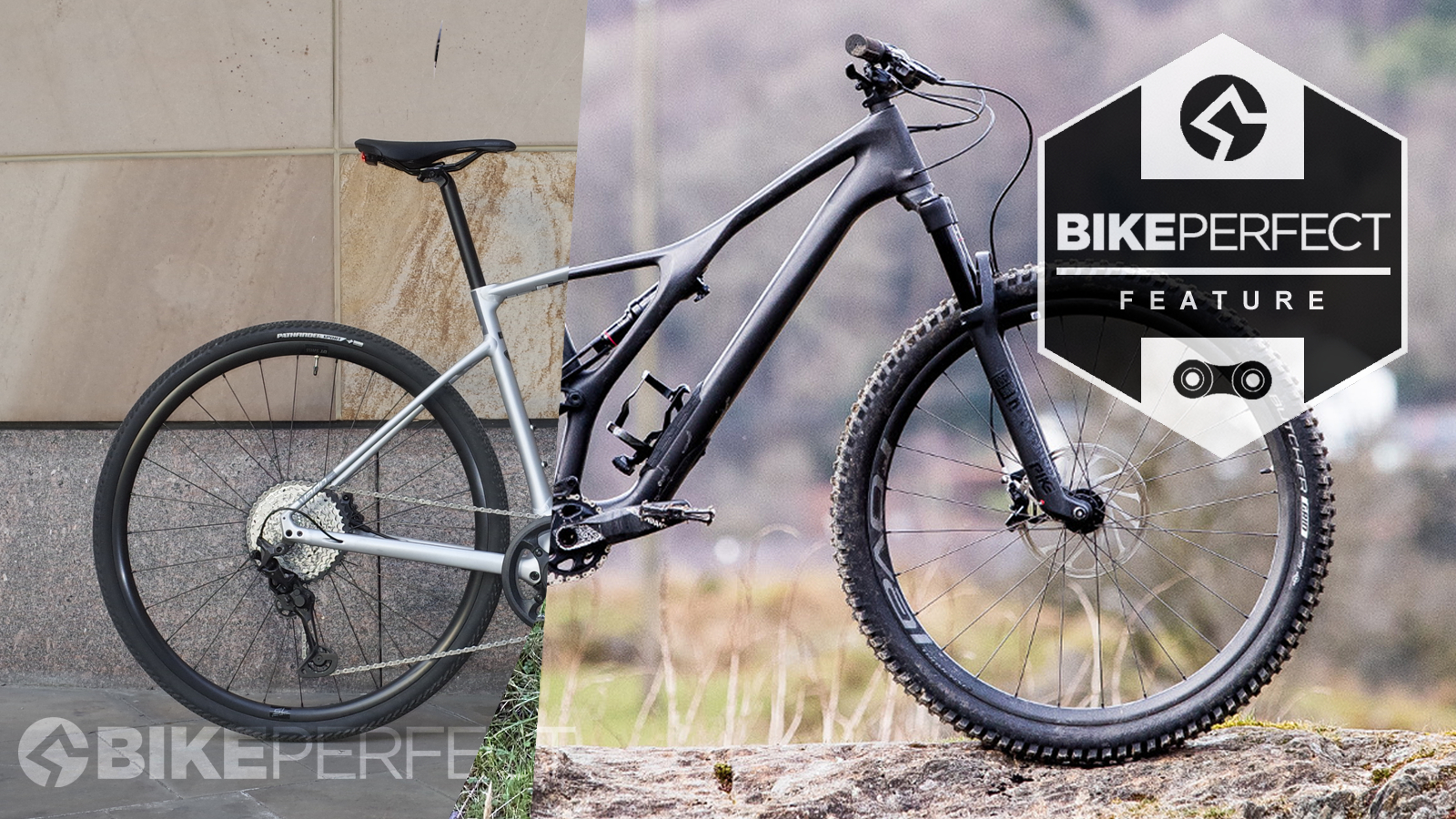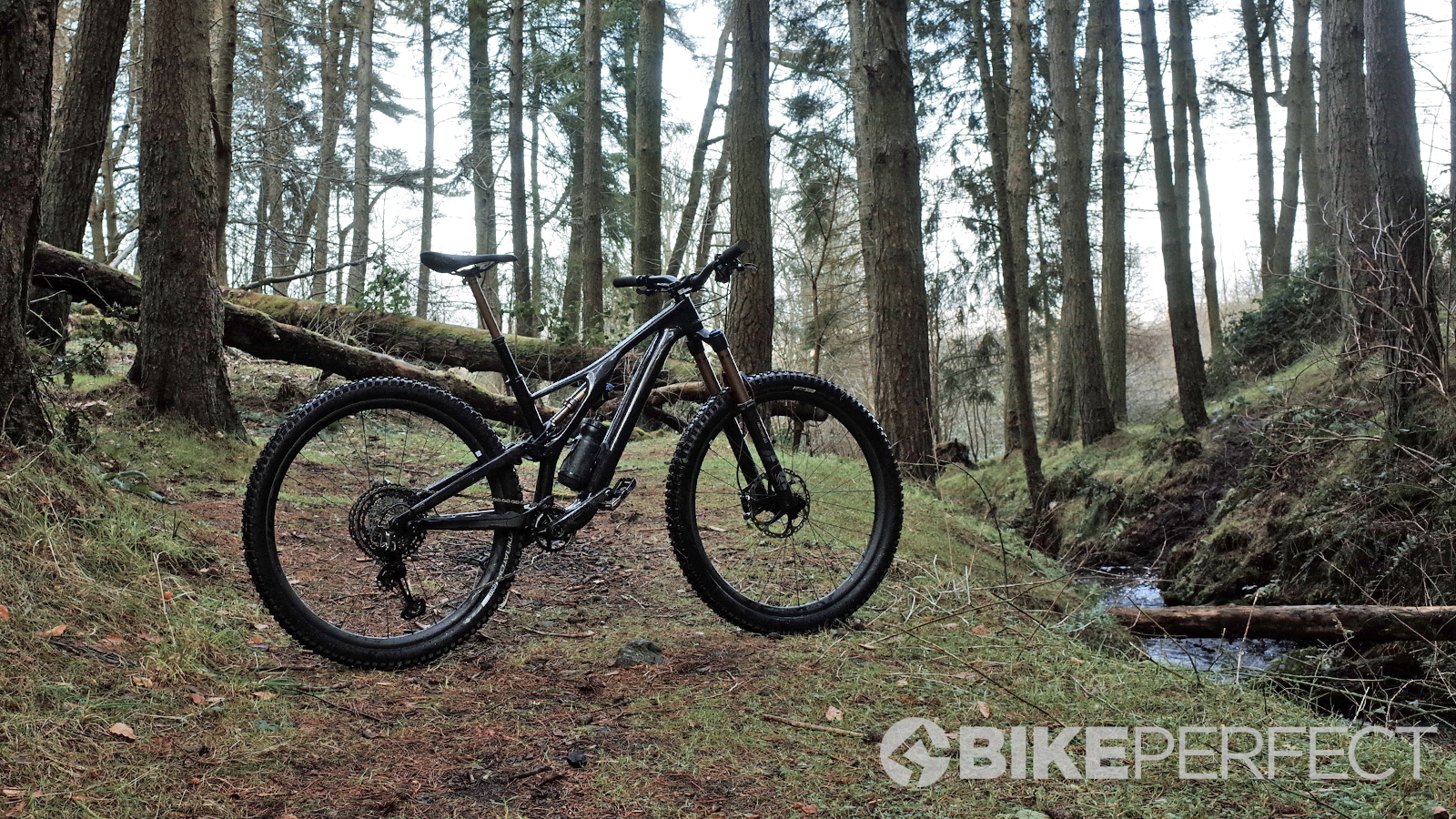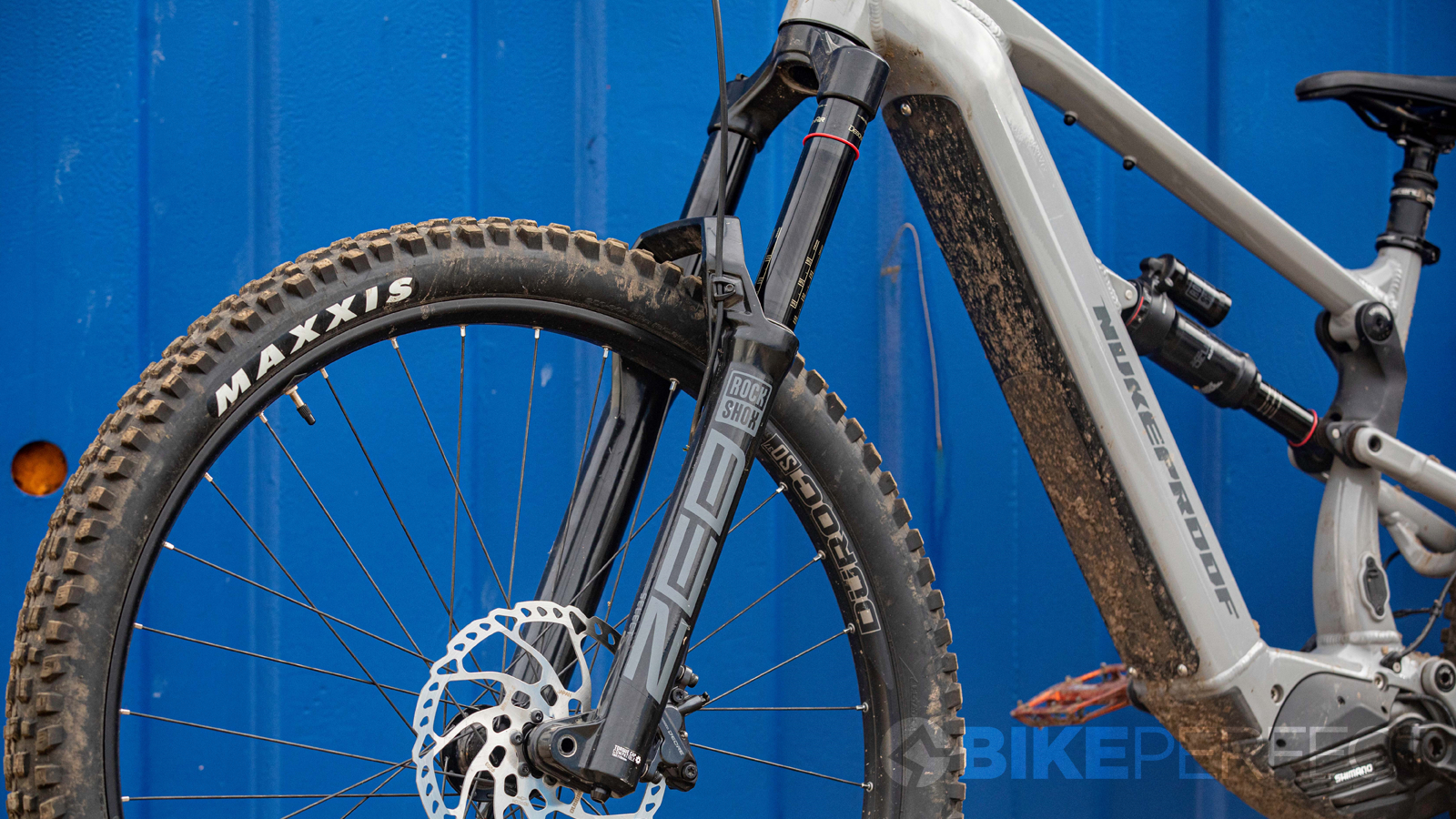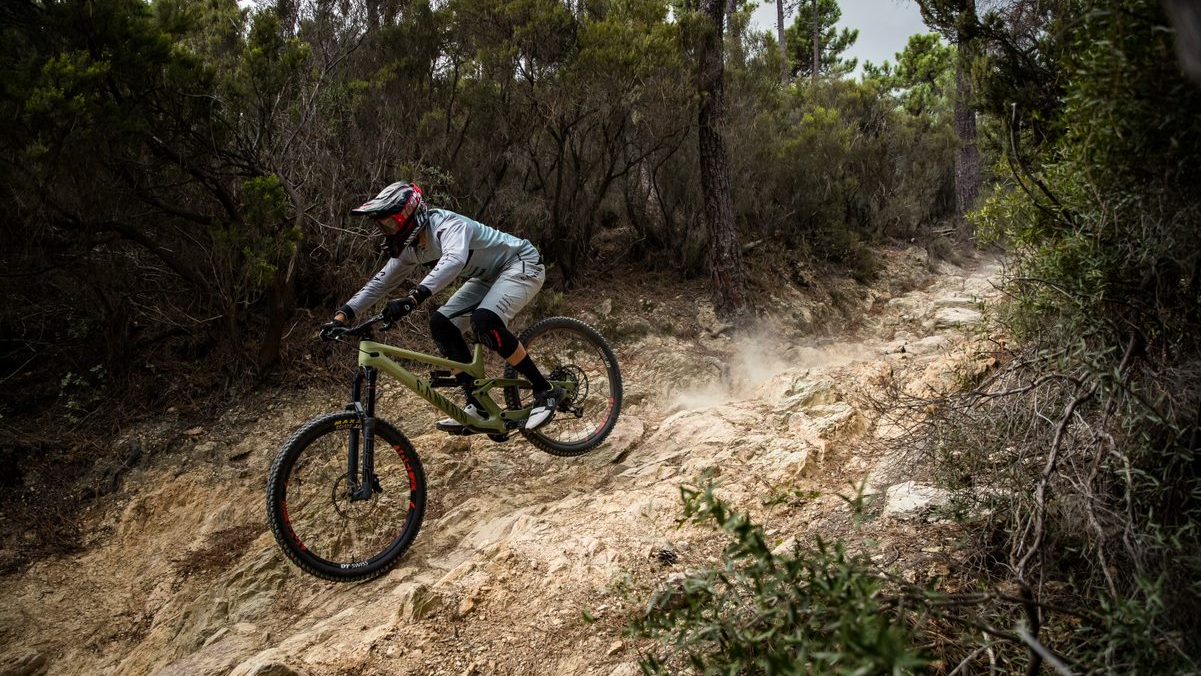Mountain bike vs hybrid bike: How are they different?
What’s the difference between a hybrid and a mountain bike? And which is right for you?

So you’re wondering whether to buy a mountain bike or a hybrid bike. Both are robust and practical in their own ways, both can be used on a range of riding surfaces, both have the comfort and practicality of straight handlebars… but there are plenty of differences.
Hybrids evolved from mountain bikes, as everyday riders who enjoyed the strength and versatility of mountain bikes realized they didn’t need quite that much weight and sturdiness for the types of riding they were doing. Broadly, hybrids evolved to be a happy compromise - great for tarmac and lighter trails - while the best mountain bikes became more and more capable - and specialized - for off-road riding.
Let’s look at the differences in more detail, including riding position, tires, suspension and everyday practicality. Then we’ll sum up which is likely to be best for you.
What’s a hybrid bike?
A hybrid is a straight-handlebar bike that’s designed to be robust and comfortable on roads and relatively smooth trails like towpaths or forest tracks. Practical touches usually include mounts for mudguards and luggage racks, which make them an easy choice for town riding, commuting and light touring. No surprise it’s the UK’s most popular type of bike.
Close relations at one end of the spectrum include dedicated city or commuter bikes, and step-through Dutch-style bikes, which tend to have racks and mudguards and even lights permanently attached. At the other end of the spectrum, there are straight-handlebar gravel bikes, which are mainly designed for going fast off-road. But here we’ll focus on the central style of multi-surface bikes.

What’s a mountain bike?
Mountain bikes also have straight handlebars but their geometries, suspension and much bigger tires are designed for grip and great handling on rougher off-road surfaces. They tend to have a more stretched-out riding position for better handling, and suspension on the front and sometimes rear of the bike to soak up impacts and improve stability.
The mountain bike family spans a wide range of bike types from cross-country mountain bikes to trail, enduro and full downhill, with increasing amounts of suspension for increasingly rough terrain. We’ll mainly focus on bikes for general trail mountain biking here, as that’s what you’ll probably be thinking about if you’re trying to decide between a mountain bike and a hybrid.
Frame design and riding style
Mountain bikes are designed to be good at going up and down steep off-road hills, being stable on loose, awkward terrain, and soaking up rough conditions from roots to long sections with big rocks. They’re also strong and stable enough for jumps and for drops of anything from small steps to over three meters, depending on the bike (and the rider).
Mountain bike frames are typically designed to be long and slack, which is great for stability on technical trails but gives relatively slow handling compared with a hybrid bike
Hybrid bikes are more like upright versions of dropped-handlebar road bikes. They’re designed to feel reasonably nimble. While they’ll feel relatively stable compared to a road bike, and the straight handlebars give you a nice feeling of control, they’re not designed for rough off-road riding. The upright body position is arguably even more comfortable than that of a mountain bike, but your weight is not spread out for good handling on unpredictable terrain.
Under about $1,500 / £1,500, most mountain bike and hybrid frames will be aluminum, which gives a nice balance of weight, strength and affordability.

Tires
Hybrid bikes typically come with lightly treaded tires between about 32mm and 38mm in width (which is much more comfortable than a typical road tire of 28mm). The best mountain bike tires are typically slower but much grippier and come in widths of 2.3in (58mm) or more.
Standard hybrid tires are - like much else on a hybrid - a fair compromise. In this case, they balance speed on the road, comfort, and grip in dry off-road conditions. The good news is that changing your tires and your tire pressures can dramatically change the feel of your bike. Using knobbly 33mm cyclocross tires can help a hybrid breeze through mud, for example. Adding bigger volume tires with lower pressures can add a lot of comfort on rougher ground (if you’re shopping for a bike, it’s worth asking about the widest tires its frame can take).
On any type of bike, the better a tire is in one situation, the worse it will be in another. There’s no tire that will work well on everything from mud to tarmac, so you just need to be realistic about what you most want to use it for. Many mountain bikes are specced with heavily lugged tires that are great off-road but slow and noisy on tarmac; if you don’t need the grip, you can change these to lighter, faster-rolling xc race tires like the Specialized Fast Trak, or even semi-slick tires like the Vittoria Terreno Dry.
Gears
All but the cheapest mountain bikes have ‘1-by’ gearing - that’s one chainring at the front and 11 or 12 cogs at the back. It keeps things simpler than a double or triple-chainring and helps stop the chain from coming off on rough ground. It does mean the steps between gears can be bigger, but most mountain bikers don’t mind that. It typically gives a super-low (easy) gear for steep hills, though the highest (hardest) gear can sometimes be a bit low for the fastest road riding.
Top-end hybrids sometimes offer 1-by options, but most have double or triple chainrings at the front, giving you between 18 and 27 gears. This usually (but not always) gives you a bigger range of gears than a mountain bike, and smaller steps between them, at the cost of more faffing as you change between the front chainrings. Generally, the hybrid gear range will be more suited to road and general riding.

Suspension and brakes
Every mountain bike and most hybrid bikes have disc brakes (where the brake pads squeeze against a small rotor near the center of the wheel), rather than old-fashioned rim brakes (where the pads squeeze against the outer rim of the wheel, next to the tire).
Disc brakes are generally more powerful than rim brakes, and much better in the wet, but some cheap ones can be joyless things and a maintenance headache, so it’s worth reading up about what your potential bike is specced with. Hybrids sometimes have rim brakes, and if your budget is low, you might decide that a good v-brake on the rim is better and simpler than a poor disc brake.
Suspension on hybrid bikes is rarely worth having; you’d be better off saving the weight and spending the money on better components, and getting your comfort via bigger tires.
Weight and maintenance
As you might expect, for a given price, a hybrid is likely to be lighter and potentially specced with some better quality components than an equivalent mountain bike. This is partly because some components, especially tires, are tougher and heavier on a mountain bike, and partly because some of the money and weight goes into suspension on a mountain bike.
Take price out of the comparison though, and the very lightest carbon mountain bikes would put most top-end hybrids to shame in terms of weight.
Maintenance will always be easier on a non-suspension bike, and maintenance of cable-operated disc brakes is easier for the home mechanic than more powerful hydraulic brakes, which apply to both hybrids and mountain bikes.

Practicality and conclusion
For year-round road riding and commuting, a fast hybrid with mudguards and a rack is hard to beat. For having a brilliant time in any off-road conditions, a mountain bike is your best friend.
Both types of bikes are awesome and both types have their limits - hybrids can’t do rough stuff; MTBs are slow and heavy on the road and aren’t generally compatible with mudguards or racks. But even then, both are adaptable - strip off the mudguards and put cyclocross tires on, and a hybrid will play in the mud or a family MTB trail; or add a specialized rack and smoother tires and a mountain bike could be a heavy-duty tourer.
Only you can decide what best suits your riding and how much customization you want to make; the good news is that there are dozens of excellent options in both camps.
The kind of hybrid bikes we would recommend range in price from about £350 to £1200. Mountain bikes range from about £450 to well over £6000.

Sean has old school cycle touring in his blood, with a coast to coast USA ride and a number of month-long European tours in his very relaxed palmares. Also an enthusiastic midpack club cyclocross and XC racer, he loves his role as a junior cycle coach on the Kent/Sussex borders, and likes to squeeze in a one-day unsupported 100-miler on the South Downs Way at least once a year. Triathlon and adventure racing fit into his meandering cycling past, as does clattering around the Peak District on a rigid Stumpjumper back in the day.
Height: 173cm
Weight: 65kg
Rides: Specialized Chisel Comp; Canyon Inflite CF SLX; Canyon Aeroad; Roberts custom road bike
